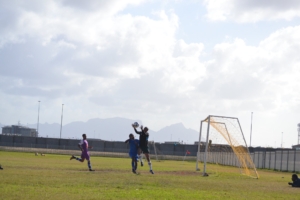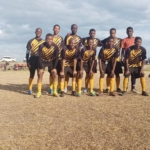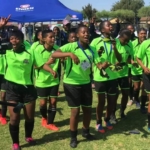The 2022 football season is up and running at grassroots level – but many sports fields around the Mother City are “extremely bad and are a social timebomb”, according to a report by SAFA Cape Town.
The footballing body conducted a city-wide investigation, dubbed Operation Huisbesoek, on the state of facilities a few months ago, just before the leagues kicked off in April. The results were dire. According to SAFA Cape Town president, Bennett Bailey, there is no appetite from the City of Cape Town or from certain communities to maintain many soccer fields.

“It looks like there is no maintenance programme; it looks like it’s a ‘I don’t care situation’, and it’s a total hands-off approach,” Bailey noted. “I mean how on earth when you go to the Bonteheuwel Sports Complex, for instance, there are no taps inside. And when you look, there is no way that people can just walk into the building because there is barbed-wire fencing all around.”
Although the City spent millions of rands on boreholes, Bailey noted, wellpoints and JoJo tanks a few years ago, none of them are functioning or connected to the irrigation system. Consequently, the fields are not being watered, and are bumpy with holes.
In many cases, the facility officer was not even aware of where football was played, Bailey alleged.
“If you look at the organogram of the City, each facility has a person responsible for the maintenance of that facility. Then you have another person whom these sports facility officials report to. Then someone oversees all of them. I’m asking myself a question, what are their conversations like on Monday mornings? When they talk about their work, what are they talking about? Or they are just there for coffee?”

The situation was even worse in the Two Oceans LFA in Masiphumelele, where the football facility was given to the community for temporary housing after the shack fires four years ago – and activities are taking place literally in the bush.
“In South Africa there is no such thing as temporary housing. So they will never get that facility back. Masiphumelele is so congested with people. Even the sites are built nearly on the streets. And what does that mean? There is a social time bomb.”

These conditions negatively affect skills set development, and the sad state of facilities can lead to serious injuries and end the careers of budding footballers.
“It robs them of knowing how to trap, pass or manage the game. It disarms the whole preparation of players. And if that happens, the interest in football will disappear.”
Who’s To Blame?
The City of Cape Town, on the other hand, has said that playability may vary from field to field, and that their internal assessments indicate that most facilities are in relatively good condition, and ready.
Patricia van der Ross, Mayoral Committee Member for Community Services and Health, presented Cape At 6 Sport with her Department’s standard maintenance protocols for maintaining fields, which follows a 12-month strategy.

“Using standard protocols as a basis, maintenance plans are then customized for each field taking into account various factors,” she said, “including the current condition of the field, facility infrastructure, the number of fields at each facility, frequency of usage, and irrigation sources available.”
For cricket, van der Ross said the City’s Department of Recreation and Parks employs area sports field coordinators, who regularly schedule assessments of cricket pitches with representatives from the Western Province Cricket Association.
“To improve engagements with the soccer fraternity, staff will be extending a similar invitation to SAFA in order to track progress and table any concerns.”
Responding to lack of irrigation at some sports facilities, she said the ability to water a field is the baseline for maintenance. However, without a reliable water source and irrigation, many maintenance functions, such as fertilising and seeding, cannot take place in the summer growing period. The maintenance programme for such fields would consist mainly of mowing and weed control.
Another negative factor that may cause a field to appear dry is over-usage. “Fields need time to recover during playing season and have limitations. A well-watered field that is over-utilised will inevitably end up in a poor condition.”

With regards to the issue of boreholes, van der Ross said the initial borehole tender was a stand-alone tender compiled to accelerate the use of non-potable water for irrigation at sport fields during the drought. The tender did not include an irrigation component and could not be used to repair or upgrade faulty systems.

According to Van Der Ross, a new tender underway will include a comprehensive irrigation maintenance component. “We do commit ourselves to using alternative measures to irrigate until the tender sets in.”
The issue of Masiphumelele is still a difficult matter, and Van Der Ross said various departments are involved in finding the best solutions.
Coming Together: Football For All
Van Der Ross said it is also important to consider that the condition of a field can be directly impacted by vandalism. “Community buy-in is essential for deterring antisocial behavior at fields.”
Bailey, too, believes the community should play its part.
“That is where our communities come in, and that is where our footballers come in. They must really hold hands and take pride in the facilities. But because it’s a hands-off approach, an I-don’t-care situation from both sides, the facility just goes by the wayside.”
It’s more than just a matter of giving people a place to kick around a ball.
“You know, football is the sport of the people,” Bailey concluded. “Once football disappears in the townships, those young people will find something else to get busy with. And it will not be something good.”
Edited by Nicklaus Kruger



